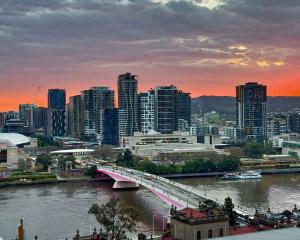
TEA OFF ON SRI LANKA’S MAIN LINE
Adventure brews at Colombo Fort Station, where trains depart for tea plantations and the lush green heart of Sri Lanka.
My day in Colombo began with a cup of tea. So too, as a matter of fact, did the story of the railway I had come here to ride.
Sri Lanka’s Main Line has its origins in the days of British colonial rule over the island. Across the empire, railways were a means of exploiting and pillaging natural resources such as iron ore and coal. Here, in Ceylon (as Sri Lanka was then known), it was something more delicate — tea and coffee, whisked to waiting ships and then to breakfast tables across the world. But there was a challenge for engineers — coffee and tea mostly grew at the lofty elevations of the island’s Central Highlands. Any railway exporting these crops would have to wind its way skywards from the heat of the ports into the cool mountains of the interior.
Brewing for over a century, Sri Lanka’s Main Line still makes for a spectacular railway ride, winding from sea level to almost 2000m, puttering past rice paddies, beneath jungle canopies and through endless tea plantations. It is indeed a journey analogous to a cup of tea — bracing and refreshing, not something to be downed in one gulp like an espresso but sipped and savoured so you can appreciate all its richness and depth.
I was mindful of this as I navigated the bustle of Colombo Fort Station, an instantly likeable terminus built by the British in 1917 and said to be partly modelled on Manchester Piccadilly Station. It would be a long day on board, so I had loaded up on supplies from food stalls — samosas and vegetable rotis — before heading to the platform. At the rear of my Badulla-bound service was a scarlet carriage enticingly marked observation car, firmly pitched at tourists, with panoramic windows and air-con. But all passengers come to realise free air-con eventually comes as standard in every class, as the thick humid air around Colombo turns to cool mountain breezes with every metre of ascent.
First our train clattered northeast along the coastal plain, tracing the route of the island’s original railway, completed in 1865. Settlements thinned out as we passed palm groves, rice paddies and tidy country stations with potted plants arranged on the platforms. Buddhas watched from line-side temples. Girder bridges bellowed as we rolled over sluggish rivers. Beyond the town of Rambukkana the inclines began in earnest: our red train started climbing up a single track to the heavens. It sliced through cuttings, clung to the precipices of a steep escarpment. Soon there was a hazy panorama out to the Indian Ocean and to the sentinel peak of Bathalegala — known in English as Bible Rock, because it looks rather like The Good Book propped on a lectern. Sri Lanka abounds in holy places, but for trainspotters there is nowhere more sacred than the National Railway Museum at our next stop, Kadugannawa. Engines from decades past watched as their modern successor chugged past, continuing the long-standing service of Highland stations.

More stops followed. Some got off at Hatton, the station serving the sacred, cone-shaped mountain of Adams Peak.
Others disembarked at Nanuoya to travel on to Nuwara Eliya, where colonists built a Tudor-style hill station to cure their homesickness in a climate not wholly dissimilar to Britain.
The highest point of the line came at Pattipola, perched at a breathtaking 1897m. By then, the train had travelled some 227km from Colombo and over a mile vertically into the clouds. From here we began a slow and incremental descent. Dusk came, and bonfire smoke perfumed the air. The lights of Highland villages twinkled out in the gloaming. The train rolled on. The engineers of the Main Line saved some of their best work for last in the form of Nine Arches Bridge, a stone span where the railway takes flight over a jungle ravine. It serves as an aperitif for the Demodara loops, where the line twists around itself, the engineer supposedly inspired by the action of tying a turban.
The train hauls into Badulla over 10 hours after leaving Colombo; a long day of rail travel by any measure, but it almost comes too soon.
It should be noted that a favourite but ill-advised and dangerous pastime on this last section of the Main Line is for passengers to hang out of open doors, clinging to the handrails. It’s a trend that has grown in an age of Instagram, but it has a long history. Feeling the Highland air against your skin, and inhaling the rich, earthy after-rain scent of the tea plantations, is nothing if not intoxicating.
The details
Start/Finish: Fort Station, Colombo/Badulla
Distance: 291km

Ticket types: Daytime trains present four options: a first class observation coach (seats face backwards, and a large rear window looks to the retreating track); ordinary first-class seats (with air-con); unreserved second- and third-class (no air-con). Note that more comfortable blue Chinese-built trains have replaced the classic red Sri Lankan ones on most departures.
How to book: Second- and third-class tickets can only be bought on the day; first class can be pre-booked at seatreservation.railway.gov.lk
Things to know: Sleepers travel this Main Line route, though you obviously won’t get to appreciate the scenery at night.
The book
Epic Train Trips of the World by Lonely Planet, $55 RRP.
— Oliver Smith is a seasoned train traveller.












